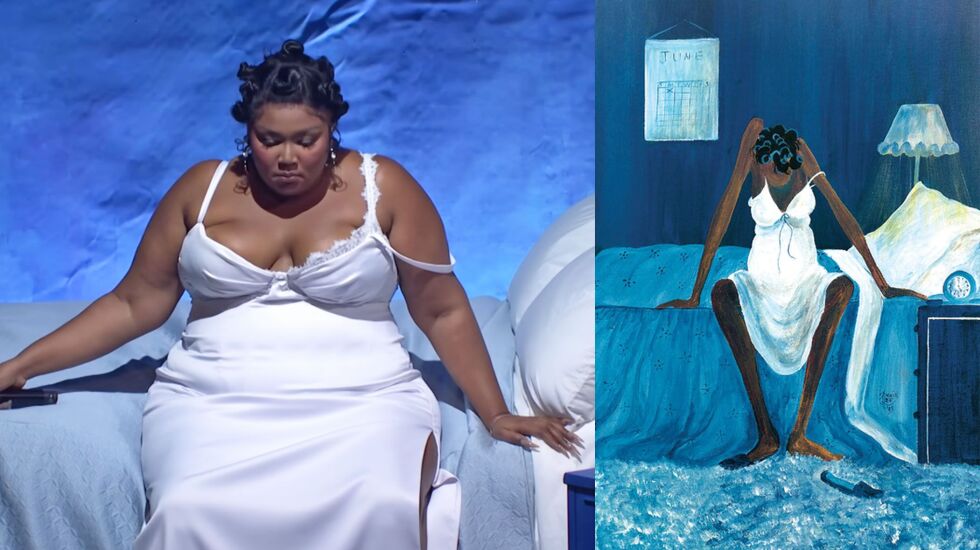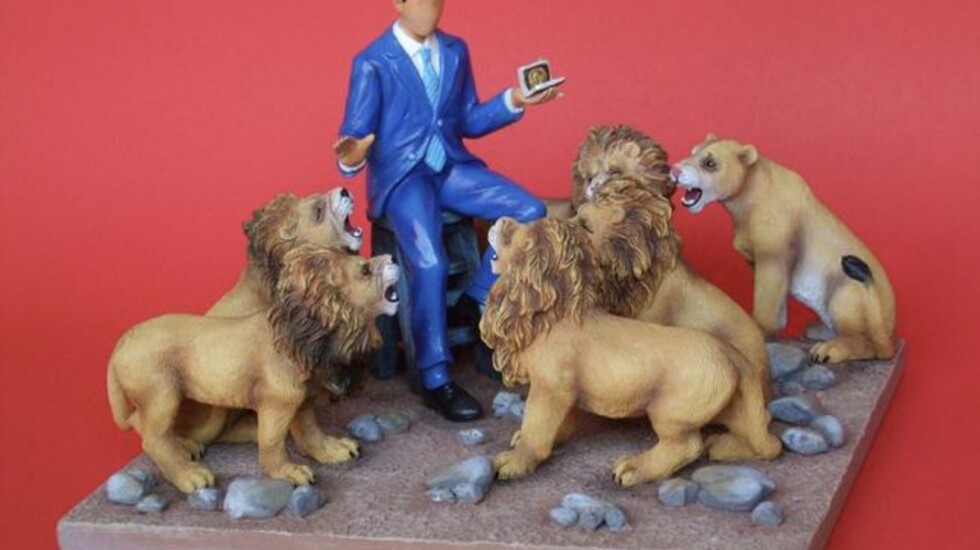
To many Black Americans, the image is instantly recognizable.
A blue bedroom, a Black woman in a delicate white nightgown rising from sleep. With one slipper on and slumped shoulders, it’s clear she’s exhausted, but still she rises.
Her hair is coiled, though her face shows no features, as is the signature of artist Annie Lee, who was raised on Chicago’s South Side.
That’s why when singer Lizzo appeared on “Saturday Night Live” on Dec. 17, her visual tribute to Lee’s iconic painting “Blue Monday” struck a chord, especially with Black women.
The tribute caught fire on social media, where “SNL” viewers have been comparing the performance by Lizzo — in a white nightgown, rising from a bed with a melancholy blue background as she performed “Break Up Twice” — to the famed image in the painting.
Although Lee died in 2014, she gave the rights to her art to her grandson, Abe Ilo. Ilo was surprised to hear of Lizzo’s performance referencing his grandmother and “best friend” — especially since it was on his 49th birthday.
“It almost felt like a birthday gift from my grandmother on some ethereal plane,” said Ilo, who is an artist based in Texas.
He didn’t know ahead of time about the tribute to Lee’s most well-known work.
“The fact that Lizzo, whose star is so bright right now, and she has a huge platform… For her to use her time in the spotlight on ‘SNL’ to honor my grandmother was definitely just awe-inspiring,” Ilo said.
Lee was raised on the South Side and lived much of her life there. Up until age 40, she was a hardworking mother living in Englewood.
The death of two husbands from cancer left her widowed twice, and she worked long hours as a chief clerk at Northwestern Railroad. At night, she put herself through art school and received her master’s degree.
After the death of her son in a car accident, Lee threw herself into her art, a passion she’d had for a while. That’s when her art career took off, and she made enough money to retire from the railroad.
“Blue Monday” was the only artwork Lee deemed a self-portrait, Ilo said. On “SNL,” Lizzo sang a song about Black love, which gets to the heart of Lee’s work, he said.
“Blue Monday” resonates with Black women and families because of the palpable emotion in the work, Ilo said.
“She put her heart and her emotion into that simple image,” Ilo said. “That was her, when she was working for the railroad and having to get up in the wee hours of the morning so that she could get ready, and catch a bus and train… and just the whole public transportation of Chicago during winter months.”
Black women can relate to the exhaustion and the resilience depicted in the painting, he said.
“In a way, it exudes feminine strength. It represents a certain Black resilience and a certain feminine resilience,” he said.

Another one of her works depicted former President Obama surrounded by lions.
Lee was a president of her local block club in Englewood and loved hosting card parties where she’d “kick the butts of men,” Ilo said. She loved photography and making people laugh.
“What she loved about the city is probably best seen in her art,” Ilo said.
Since Lee died from Chronic Obstructive Pulmonary Disease (COPD) in 2014 at age 79, Ilo has been tasked with protecting and maintaining her legacy, which he does through the Annie F. Lee Art Foundation.
Ilo has a message for Lizzo, too. If Lizzo wants to use “Blue Monday” in an official video for “Break Up Twice,” he’d be more than happy to sign off.
Ilo painted a version of “Blue Monday” himself as an ode to his grandmother’s iconic work. It’s currently hanging in a gallery in Detroit, but he’d love to send it to Lizzo for doing “a beautiful tribute.”
Mariah Rush is a staff reporter at the Chicago Sun-Times via Report for America, a not-for-profit journalism program that aims to bolster the paper’s coverage of communities on the South and West sides.







